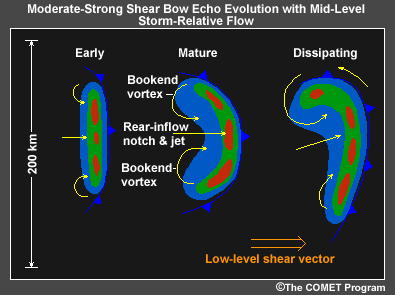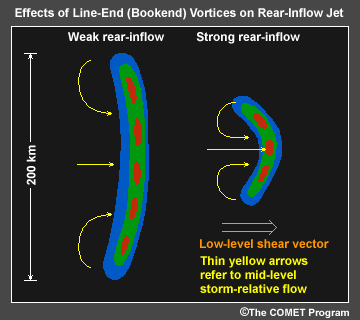4.2.1 Bow Echo Evolution

Mesoscale Meteorology
Severe Convection II: Mesoscale Convective Systems
4.2 Evolution


Bow echoes follow the full symmetric-to-asymmetric squall line evolution,
but on a smaller scale. Their extreme intensity is due in large part to
their relatively small size. In particular, the smaller distance between
the bookend vortices enhances the focusing effect on the mid-level flow
between the vortices, which can significantly strengthen the rear-inflow
jet. The descent of this enhanced rear-inflow jet to the surface produces
the extreme surface winds associated with many bow echoes. It is important
to remember that bow echoes are generally an indicator of intense winds,
not a predictor. The echo has the bowed shape due to a focused intense
flow into the back of the system.

In a strong shear environment, which bow echo stage(s) are likely to produce large swaths of damaging winds at the surface?
(Choose the letter(s) corresponding to the image.)
a.
b.
c.
d.
e.
When both line-end vortices act in tandem (stage e) the rear-inflow jet becomes quite strong and strong winds are likely at the surface. Damaging winds may last into the later stages (stage a) as well, even when the system has become asymmetric, but the severe winds may be located primarily on the northern half of the system.
Note: Although not depicted in this simple conceptual model exercise, remember it is important to focus your attention on any small-scale bowing segments within the line during all stages of evolution in order to pinpoint the location of potential damaging winds.